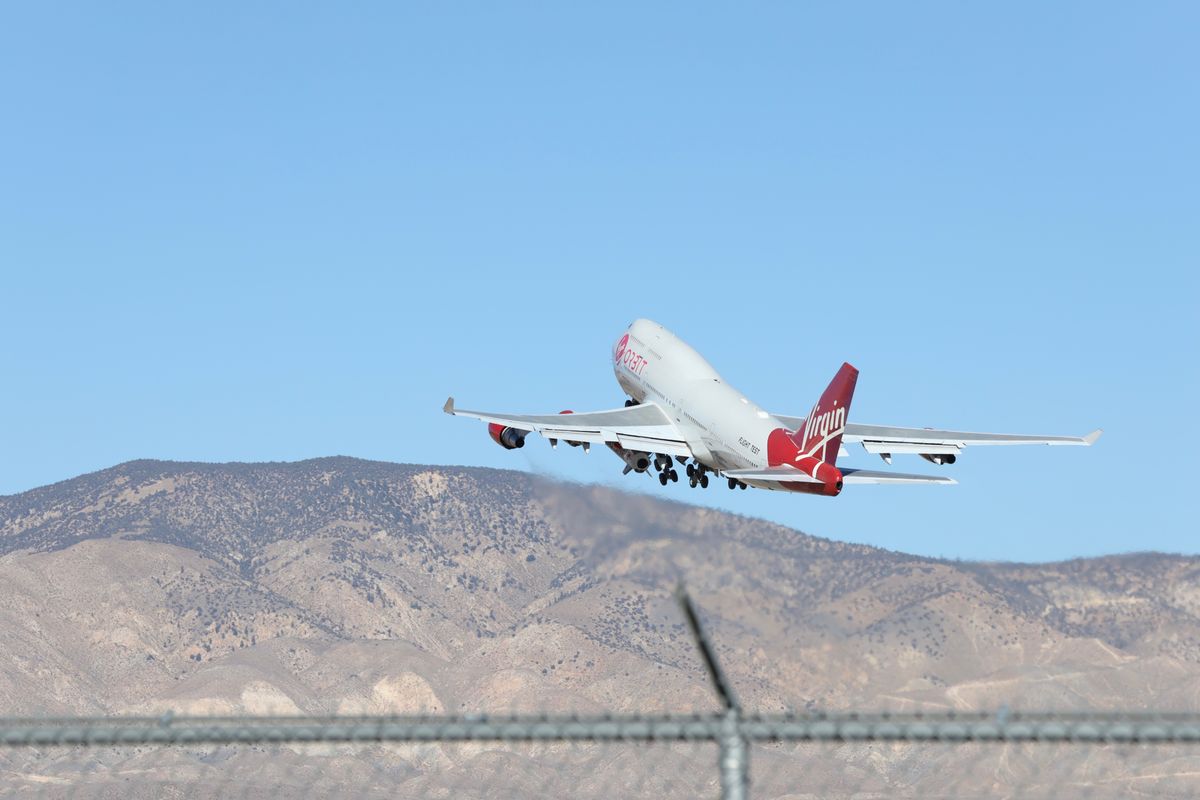Virgin Orbit launches 10 satellites to orbit in landmark test flight

Virgin Orbit‘s name isn’t purely aspirational anymore.
The company’s LauncherOne rocket reached orbit today (Jan. 17) on its second powered test flight, a mission called Launch Demo 2. And that’s not all: The rocket also successfully deployed 10 tiny cubesats, which flew via NASA’s Educational Launch of Nanosatellites program.
“Payloads successfully deployed into our target orbit! We are so, so proud to say that LauncherOne has now completed its first mission to space, carrying 9 cubesat missions into low Earth orbit for our friends @NASA. #LaunchDemo2,” Virgin Orbit announced via Twitter today. (One of the nine missions featured two cubesats, so the total number of spacecraft lofted was 10.)
In photos: Virgin Orbit’s LauncherOne rocket for satellite missions
Payloads successfully deployed into our target orbit! We are so, so proud to say that LauncherOne has now completed its first mission to space, carrying 9 CubeSat missions into Low Earth Orbit for our friends @NASA. #LaunchDemo2January 17, 2021
The 70-foot-long (21 meters), two-stage LauncherOne, which is capable of delivering up to 1,100 lbs. (500 kilograms) to orbit, took off from California’s Mojave Air and Space Port today at about 1:40 p.m. EST (1840 GMT; 10:40 a.m. local California time). The rocket left the ground beneath the wing of its Boeing 747 carrier plane, known as Cosmic Girl.
This air-launch strategy — which Virgin Orbit’s sister company Virgin Galactic also employs with its suborbital space plane, SpaceShipTwo — increases flexibility and responsiveness compared to traditional vertically launched rockets, Virgin Orbit representatives have said.
Pilots Kelly Latimer and Todd Ericson took Cosmic Girl southwest, cruising out over the Pacific Ocean west of the Los Angeles area. About an hour after liftoff, at an altitude of roughly 35,000 feet (10,700 m), LauncherOne dropped free from the plane, then lit up its first-stage NewtonThree engine to make its own way to space.
The NewtonThree aced its three-minute burn, notching a milestone that LauncherOne failed to achieve on its first orbital attempt, May 2020’s Launch Demo mission. During that previous flight, a propellant line ruptured just after the first-stage burn began, bringing the test to an end.
But today, LauncherOne just kept on checking boxes. The rocket’s upper stage separated successfully and fired its NewtonFour engine as planned, and LauncherOne slipped into orbit around our planet.
About 45 minutes after its first burn, the NewtonFour blazed up again, circularizing the upper stage’s orbit. Shortly thereafter, the upper stage deployed the 10 tiny satellites, which were provided by eight different university groups and NASA’s Ames Research Center in Silicon Valley.
This was a huge accomplishment for Virgin Orbit, which aims to claim a sizable portion of the growing small-satellite launch market. That market is currently dominated by Rocket Lab, whose Electron booster has been operational since 2018.
But the competition seems poised to start heating up considerably, and not just from Virgin Orbit. For example, California startup Astra’s 38-foot-tall (12 meters) Rocket 3.2 reached space for the first time last month, on the company’s second orbital test flight. And several other companies, such as Firefly Aerospace and Relativity Space, will start flying their own small-satellite launchers in the near future, if all goes according to plan.
The above vehicles are all designed to give dedicated rides to relatively small spacecraft. That’s not the only way for such satellites to fly; they can also hitchhike as secondary payloads on big rockets like SpaceX’s workhorse Falcon 9. But such missions are tailored to the big primary payloads, so they generally don’t provide as precise a delivery for the small satellites riding piggyback.
Mike Wall is the author of “Out There” (Grand Central Publishing, 2018; illustrated by Karl Tate), a book about the search for alien life. Follow him on Twitter @michaeldwall. Follow us on Twitter @Spacedotcom or Facebook.
